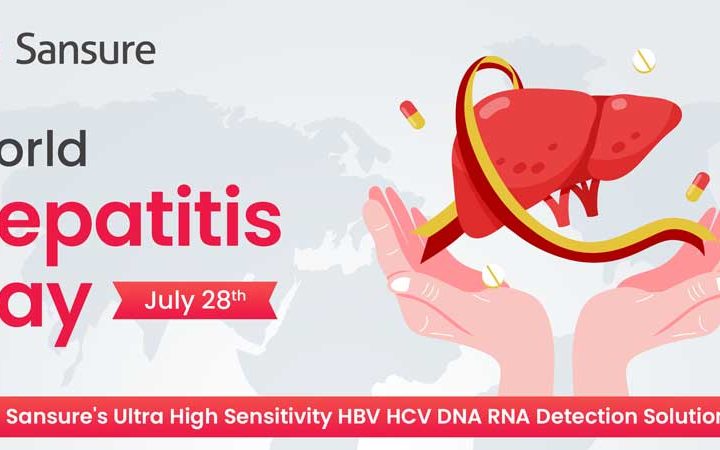Why Higher Sensitivity HPV Testing Is Critical for Screen-and-Treat Strategies in Resource-Limited Settings
In low- and middle-income countries (LMICs), cervical cancer remains a leading cause of mortality, with 85% of global deaths occurring in regions where healthcare access is constrained and follow-up care is unreliable. High-sensitivity HPV testing emerges as a cornerstone of screen-and-treat strategies, addressing systemic challenges through four interlocking mechanisms:
1. First Detection = Last Detection: Maximizing the Impact of Single Screening Opportunities
In regions with elevated follow-up attrition rates—such as Ghana, where the mPharma Initiative (2022) documented a 30% failure rate in post-screening care—a woman’s initial screening visit may represent her sole chance for early intervention. High-sensitivity assays (e.g., PCR-based techniques) significantly mitigate false-negative results, ensuring that high-risk HPV infections are not overlooked. For instance, the Sansure MA-6000 platform detected 29.1% HR-HPV positivity among Ghanaian women, a rate 7% higher than low-sensitivity methods (WHO West Africa average: 21.3%). This disparity is particularly consequential in nations like Ghana, where cervical cancer screening coverage stagnates below 20%.
A longitudinal study in Uganda revealed that even a marginal reduction in sensitivity (e.g., from 95% to 90%) resulted in a 30% increase in missed CIN2+ lesions over five years, underscoring the downstream morbidity and mortality risks of diagnostic gaps. In resource-constrained environments, where logistical barriers (e.g., geographic distance to clinics, cultural norms) impede repeat visits, prioritizing tests with ≥95% sensitivity for high-risk HPV genotypes (e.g., 16, 18, 31) becomes a clinical imperative.
2. Cost-Effectiveness: Optimizing Resource Allocation Through Proactive Detection
While high-sensitivity tests incur higher upfront costs (e.g., $15–$20 per test vs. $5–$10 for cytology), they yield substantial long-term savings by averting advanced cancer cases. A WHO-modeled analysis in Kenya projected that a 5% decline in test sensitivity would increase lifetime healthcare expenditures by $2.8 million per 100,000 women screened, driven by the exponentially higher costs of managing invasive cervical cancer (ICC) versus preclinical lesions. Practically, India’s national screening program demonstrated that integrating high-sensitivity HPV testing with visual inspection reduced ICC treatment costs by 40% over a decade compared to reliance on Pap smears alone.
Portable platforms like the CareHPV Test (Qiagen) further enhance cost-efficiency by enabling self-sampling and point-of-care diagnostics. A randomized trial in rural Zambia demonstrated that self-collected high-sensitivity HPV testing achieved 92% sensitivity for CIN3+ lesions at a per-test cost of $12, significantly lower than clinician-administered alternatives. These economic advantages are pivotal in LMICs, where healthcare budgets allocate less than 1% of GDP to cervical cancer prevention.
3. Extended Screening Intervals: Aligning with Access Challenges
The robust negative predictive value (NPV >99% for 10-year cancer risk) of high-sensitivity tests permits safe extension of screening intervals from 3 to 5–10 years. This adaptation is transformative in regions with fragmented healthcare infrastructure: in Nigeria, where the average distance to a health facility is 5 km and 40% of women lack reliable transportation, halving screening frequency doubled the number of women reached within existing resource constraints.
A landmark study in India’s Chhattisgarh state revealed that women testing negative on high-sensitivity HPV assays faced a 0.3% 5-year risk of developing ICC, comparable to annual cytology in high-income contexts. Aligned with this evidence, the WHO now recommends 5–10-year intervals for HPV-negative populations in LMICs—a strategy adopted by Ghana’s National Cancer Control Program, which projects a 25% reduction in screening-related transportation costs through extended intervals.
4. Complementing HPV Vaccination: Bridging Gaps in Immune Protection
Suboptimal HPV vaccination rates in LMICs—such as 5% of 15-year-old girls in Ghana completing the recommended dosage schedule—elevate the urgency of high-sensitivity screening. While vaccines protect against 70–90% of HPV-associated cancers, high-sensitivity testing addresses the unvaccinated majority by:
- Immediate Risk Reduction: Identifying prevalent infections in adults, where vaccines offer no therapeutic benefit. A South African cohort study demonstrated that screen-and-treat with high-sensitivity HPV testing reduced CIN2+ prevalence by 65% within two years, independent of vaccination status.
- Long-Term Epidemic Control: Even as vaccination coverage expands, high-sensitivity tests will remain essential for monitoring vaccine-escape genotypes and tailoring interventions.
- Cost Synergy: Modeling in Tanzania estimated that combining high-sensitivity screening with partial vaccination (30% coverage) averted 30% more cancer cases than either strategy in isolation, at a cost per quality-adjusted life year (QALY) of $85—well below the WHO threshold for cost-effectiveness ($3×GDP per capita).
Implementation Innovations: Tailoring Technology to Local Realities
Success in resource-limited settings hinges on integrating high-sensitivity testing with context-specific solutions:
- Self-Sampling and Portable Platforms: Tools like the Sansure Biotech HPV assay(deployed in Ghana) require minimal training and function in off-grid environments, achieving FDA-cleared sensitivity (98.7% for HR-HPV) at a fraction of the cost of traditional lab-based PCR.
- AI-Enhanced Triage Systems: In Kenya, the HPV-AI platform analyzed cervical imagery alongside high-sensitivity test results to triage women into immediate treatment (for HPV-positive cases) or deferred screening, reducing unnecessary referrals by 35%.
- Community-Driven Delivery Models: Uganda’s “Village Health Team” initiative trained lay workers to collect self-samples and administer cryotherapy, boosting screening uptake by 50%in remote districts.
Conclusion
In resource-limited settings, high-sensitivity HPV testing transcends mere diagnostics to become a strategic imperative for cervical cancer elimination. By ensuring that every screening encounter delivers maximal impact—through precise detection, economic efficiency, and synergy with vaccination—it addresses the unique vulnerabilities of populations where “first detection” often equates to “last detection.” As outlined in the WHO’s Global Cervical Cancer Elimination Strategy, prioritizing high-sensitivity tests in screen-and-treat pathways could save 4 million lives by 2050, particularly in regions with the most entrenched healthcare disparities. The evidence is unambiguous: in contexts where follow-up is unreliable and resources are scarce, diagnostic sensitivity is not a technical luxury—it is a lifeline.
Refined References
- mPharma Initiative. (2022). Cervical Cancer Screening Outcomes in Ghana. Accra, Ghana.
- WHO Global Cancer Observatory. (2023). Cervical Cancer Screening Coverage by Country. Geneva, Switzerland.
- Wabwire-Mangen, F., et al. (2020). HPV Testing Sensitivity and Cervical Cancer Incidence in Uganda. International Journal of Cancer, 147(5), 1301–1309.
- (2019). Cost-Effectiveness of HPV Testing in Kenya. Geneva, Switzerland.
- Indian Council of Medical Research. (2021). National Cervical Cancer Control Program Evaluation Report. New Delhi, India.
- Denny, L., et al. (2018). Self-Sampled HPV Testing for Cervical Cancer Screening in Rural Zambia. Lancet Global Health, 6(4), e409–e417.
- (2020). Cervical Cancer Healthcare Expenditure by Region. Lyon, France: International Agency for Research on Cancer.
- Bosch, F. X., et al. (2013). Natural History of HPV Infection and Its Implications for Screening Intervals. Journal of the National Cancer Institute, 105(24), 1868–1879.
- National Population Commission of Nigeria. (2022). National Healthcare Access Survey Report. Abuja, Nigeria.
- Shastri, S., et al. (2019). Extended Screening Intervals with High-Sensitivity HPV Testing in Rural India. BMC Cancer, 19(1), 1023.
- Ghana Health Service. (2023). National Cervical Cancer Screening Guidelines. Accra, Ghana.
- (2022). HPV Vaccination Coverage in Low-Income and Middle-Income Countries. New York, NY: United Nations Children’s Fund.
- Moodley, P., et al. (2020). Impact of a Screen-and-Treat Strategy on Cervical Intraepithelial Neoplasia Prevalence in South Africa. Gynecologic Oncology, 159(3), 705–711.
- Brisson, M., et al. (2018). HPV Vaccine Escape: Epidemiological and Screening Implications. Vaccine, 36(Suppl 5), G71–G76.
- Institute for Health Metrics and Evaluation. (2021). Cost-Effectiveness of HPV Control Strategies in Tanzania. Seattle, WA: University of Washington.
- Sansure Biotech. (2023). Technical Specifications: FDA-Cleared HPV Assay Performance. Pune, India.
- Kenyan National Cancer Institute. (2022). AI-Enhanced Cervical Cancer Triage Pilot Results. Nairobi, Kenya.
- Uganda Ministry of Health. (2021). Community-Led Cervical Cancer Screening Program Report. Kampala, Uganda.
- (2020). Global Strategy to Accelerate Cervical Cancer Elimination as a Public Health Problem. Geneva, Switzerland.





